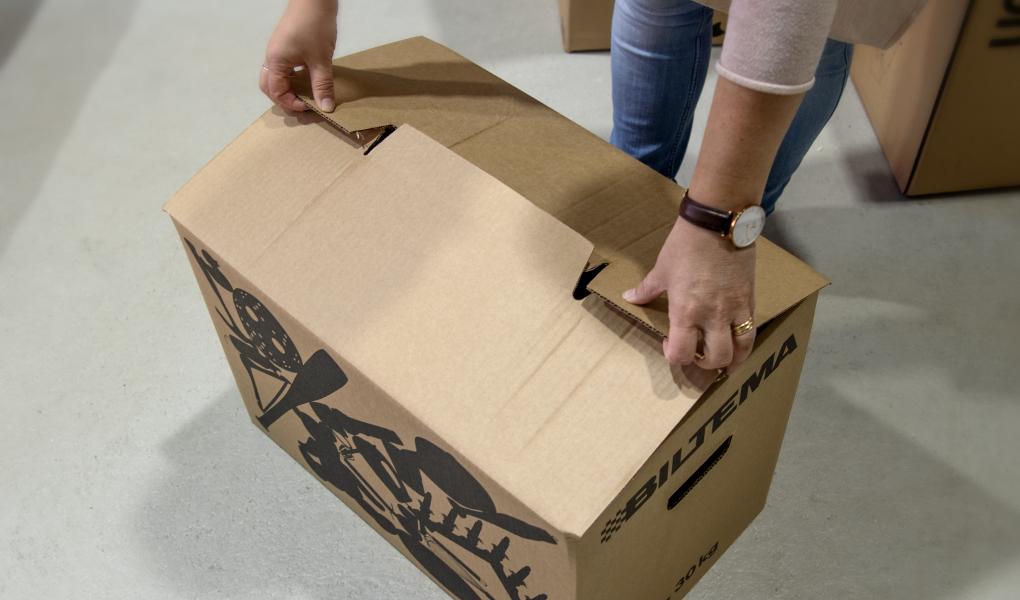Stated max weight and general properties
The stated max weight and general properties such as the thickness of the corrugated cardboard, the internal dimensions and the volume are noted or measured. The thickness of the board is measured using a Vernier calliper on the lid of the box.
Stacking capacity (dry packing boxes)
Two boxes are packed with 18 kg of books in each and stacked on top of each other. A third box is placed on top and loaded up with 15 kg. The weight in the third box will then be increased up to 260 kg or until one of the two lower boxes collapses. Box three will initially be loaded with 50 kg, and then the load will be increased in 25 kg intervals until the total weight will be 100 kg. From thereon the weight will be increased by 10 kg at a time until the boxes collapse or the maximum weight of 260 kg will be reached.
Stacking capacity (damp packing boxes)
Boxes one and two are loaded with 18 kg each and stacked in the same way as when testing the stacking capacity of dry boxes.

The packed boxes are moistened to simulate exposure to rain.
Photo: Anna Sigge
Box two will be moistened with two sprays of water on the short sides and three sprays on the long sides, plus one spray on each corner. The moistening process will be repeated once again (total 28 sprays). Immediately afterwards, box three will be stacked on top and packed with weights in the same way as for the dry boxes until the boxes collapse. The amount of weight added to box three will be registered. Once 100 kg has been added, the boxes will be moistened again using the above procedure. The amount of water simulates the box being exposed to a damp climate or being carried between house and van in rainy and humid weather.
Carrying strength
The laboratory also checks that the boxes can handle their stated max weight without damage. The boxes are packed with 40 kg and then two people lift the box and carry it a set number of metres. Any damage to or weaknesses in the box will be registered.

To assess the ergonomics of the handles, the boxes are carried with a load of 40 kg inside.
Photo: Anna Sigge
Function and strength of the top flaps
The box will be opened and closed 20 times. A 5 kg weight ia placed in the box and the box is then lifted by the top flaps from a table down to the floor and back up to the table again. The boxes are lifted 30 cm up from the floor by the top flaps 20 times. An assessment is made of how easy the top flaps are to open and close, and how well they keep their integrity.
Handle ergonomics
The design and comfort of the handles is assessed. The boxes are packed with the max weight of 40 kg and two people lift the box, one at each end, and carry it over a straight distance of around 3.5 m, after which the box is placed on the ground. The procedure is repeated five times and the design and comfort of the handles is assessed.

The construction and closure of the boxes is assessed.
Photo: Anna Sigge

